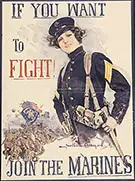World War One Aircraft
World War I saw the rise of airplanes as weapons of war.
What was funny was that generals on both sides thought that airplanes would do nothing to change warfare at all.
That is why in 1911 they agreed that armies would never use airplanes for war.
While the idea seems funny today, it made sense at the time. Airplanes in 1914 were not like airplanes today.
They were not made of metal. The earliest airplanes had stitched canvas stretched over a wooden frame. The canvas was then painted to reduce drag and help pilots recognize planes from their own country.
The pilots sat in a tiny seat just behind the propeller. Each plane had two wings, one above the pilot and one below, giving them the name Bi-planes.
During World War 1, aircraft technology was still pretty new, but it played an important role in the war. There were several types of aircraft used by different countries.
List of some of the main types of WWI aircraft:
- Fighters
- Bombers
- Aerial Reconnaissance
- Ground-attack
- Seaplanes and Flying Boats
Fighters
These were small, fast planes designed to shoot down enemy aircraft. They were often armed with machine guns and were used to protect friendly planes and attack enemy ones.
Sopwith Camel (British)
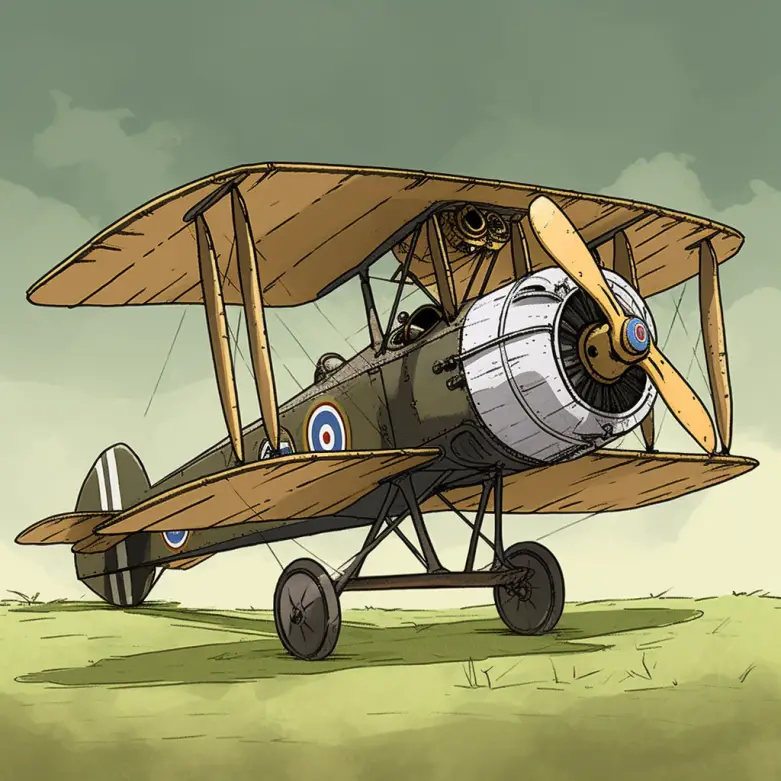
The Sopwith Camel fondly referred to as the “hump-plane” due to its distinctive shape, was a pivotal aircraft during World War I. With one seat, two guns, and the ability to move nimbly through the air, it was fast, efficient, and highly effective in battle.
Although it was notorious for being tricky to fly, the Camel won more aerial battles than any other plane during the war. Its first flight occurred in 1916, and it was adopted by the military in 1917.
The Camel’s success did not go unnoticed, and a newer version of the plane, the Camel 2F.1, was introduced for use by the Navy. This upgraded version boasted stronger metal parts and was an essential asset to the military’s fleet.
With its advanced technology and remarkable maneuverability, the Camel 2F.1 proved to be a formidable opponent in battle. Despite being a small aircraft, it was a powerhouse on the front lines, and its contributions to the war effort should not be underestimated.
The Sopwith Camel was a true game-changer in the world of aviation, and its legacy lives on to this day.
Fokker Dr.I (German)
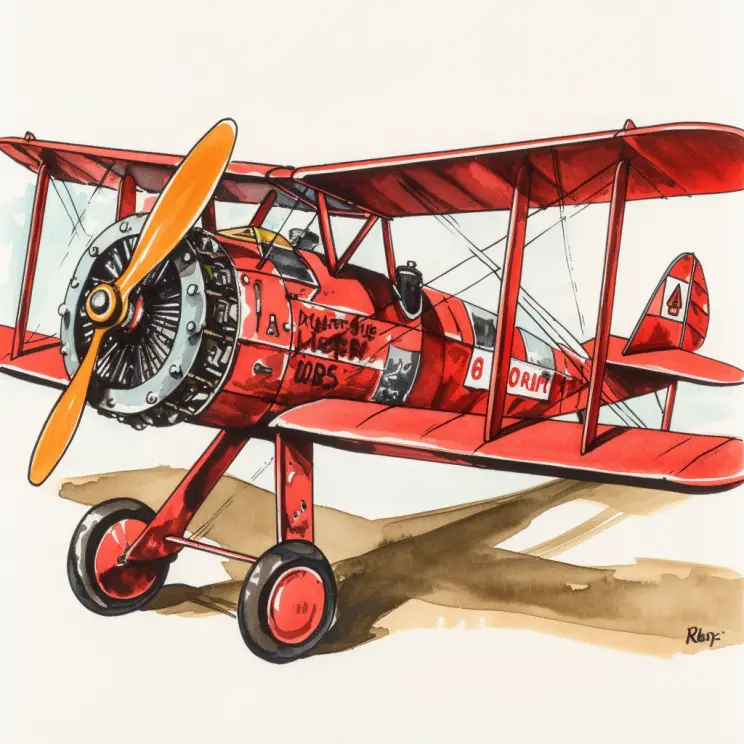
The Fokker Dr. I triplane, a legendary aircraft from World War I, has captured the imaginations of aviation enthusiasts for decades.
Nicknamed the “Red Baron’s” plane after (Manfred von Richthofen), this formidable fighter was a game-changer on the battlefield. Swift, agile, and deadly, it was the perfect weapon for daring pilots who wanted to take the fight to the enemy.
In 1917, the German military acquired the Fokker Dr. I triplane, and it quickly became a favorite of pilots. The “Red Baron” himself, a renowned aviator with numerous victories under his belt, preferred the triplane over other planes he flew.
With its superior maneuverability and speed, the Fokker Dr. I triplane allowed pilots to outmaneuver and outgun their opponents in the air.
The Fokker Dr. I triplane’s dominance on the battlefield continued until 1918 when newer planes replaced it. While no original planes remain, a replica of Lt.
Arthur Rahn’s plane from 1918, which had six confirmed victories, was created to honor the legacy of this remarkable aircraft.
Whether you’re a history buff or an aviation enthusiast, the Fokker Dr. I triplane is a symbol of courage, innovation, and the indomitable spirit of those who fought in the Great War.
SPAD S.XIII (French)
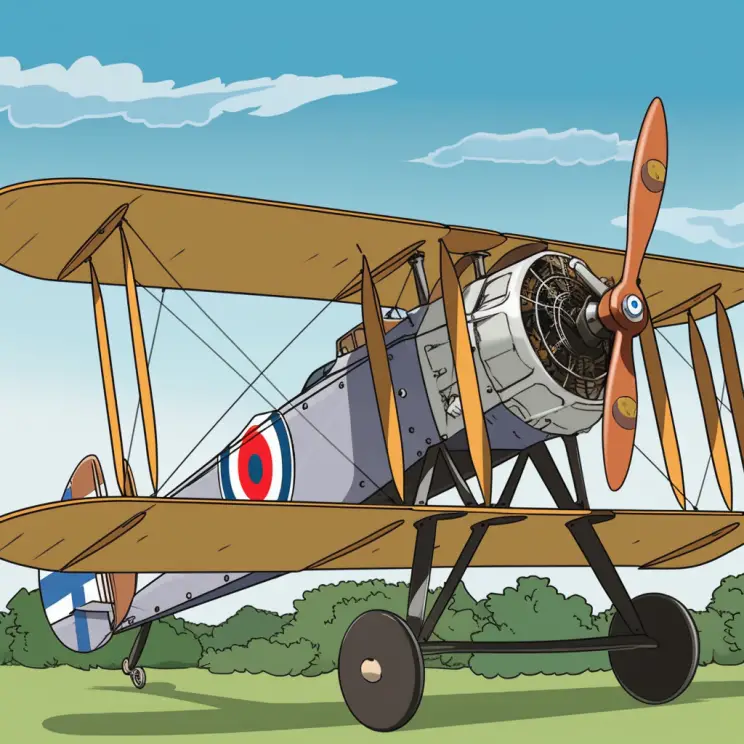
The SPAD S.XIII – a fighter aircraft that soared to new heights, leaving its competitors in the dust. Developed from the S.VII design, this plane packed a powerful punch with its dual machine gun systems and more robust engines. With over 8,400 units produced, it’s no wonder the S.XIII was a force to be reckoned with.
Featuring an internal wood structure with fabric covering and biplane wings of equal span, the S.XIII was built to handle the toughest conditions. In the open-air cockpit, the pilot had a forward view of the twin 7.7mm Vickers machine guns – a sight to behold.
Taking off on April 4th, 1917, the S.XIII was quickly put into action just a month later, proving its power and strength on the battlefield.
Despite its reduced maneuverability at slower speeds, the S.XIII was a favorite among pilots.
Designed by Louis Bechereau, who also created the S.VII, this aircraft was the pinnacle of aviation engineering.
Out-flying the German D.VII planes and even surpassing the famous Sopwith Camel, the S.XIII proved its worth time and time again. With its sturdy build and unparalleled firepower, the SPAD S.XIII will always remain a legend in aviation history.
Bombers
These planes were larger and slower than fighters but could carry bombs to drop on enemy targets like factories, train stations, or trenches.
Gotha G.V (German)
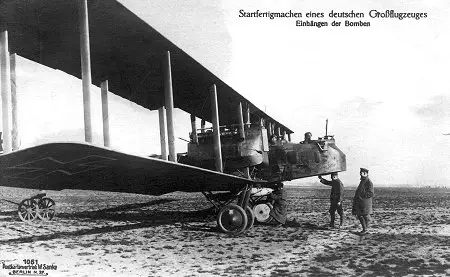
This bomber plane was a game changer in World War I, replacing the Zeppelins that were used to drop bombs on London and other targets.
The Gotha G.V was a powerful machine that left the English trembling in fear at the mere mention of its name.
This engineering triumph was built with a combination of wood, steel, and fabric, and had two Mercedes engines that made the sound of the plane absolutely terrifying.
The Gotha G.V was used to drop bombs on England, which understandably made the people angry. The Royal Flying Corps had to pull some fighter planes from the front lines to protect England from the Gotha G.V’s destructive power.
However, even with this added protection, many pilots found it difficult to fly the Gotha G.V, resulting in numerous crashes during takeoff or landing.
Unfortunately, the Gotha G.V’s bombing raids set the stage for future bombing tactics during World War II. While it was a technological marvel for its time, the devastation caused by this bomber plane left a lasting impact on history.
Handley Page Type O (British)
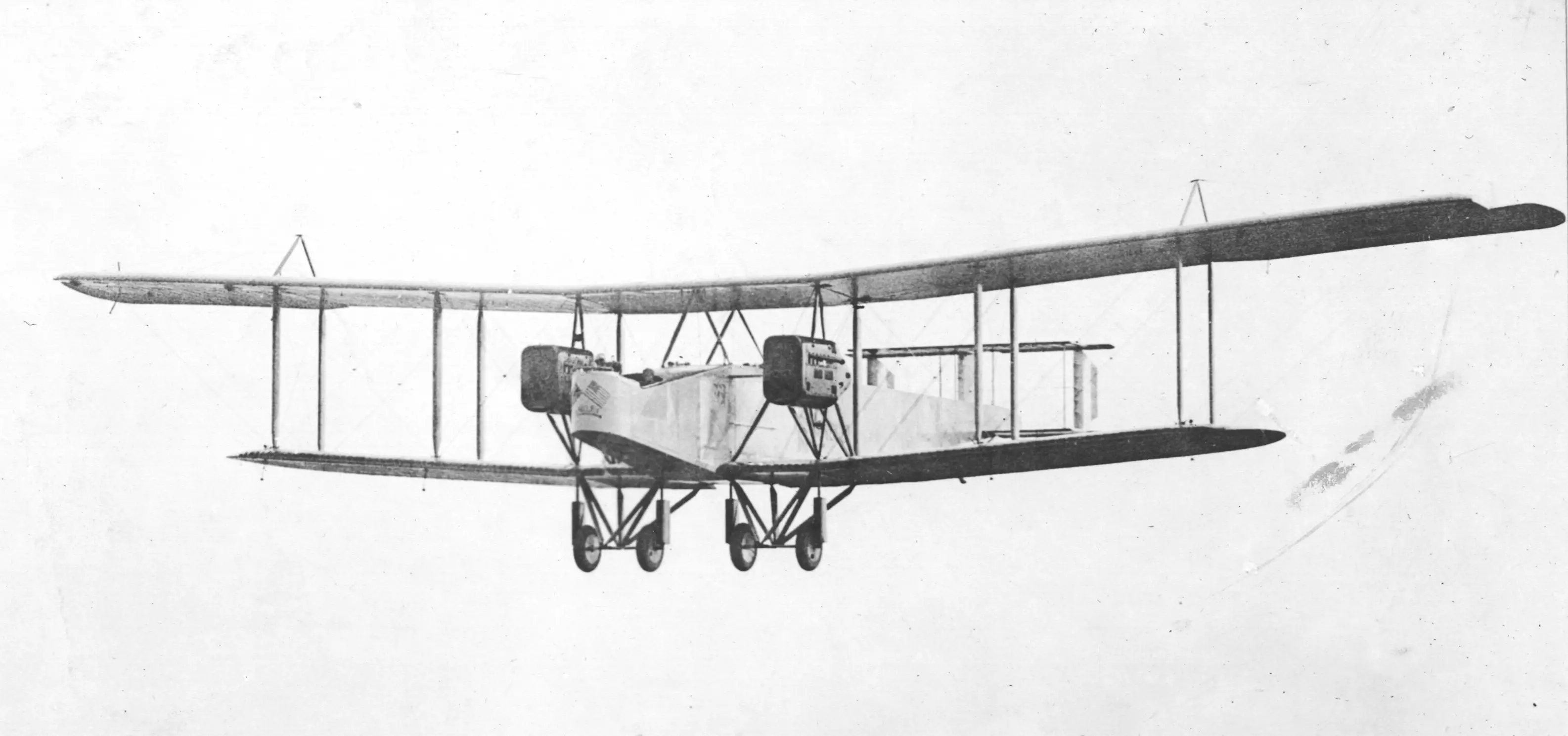
The Handley Page O/400 model series is a true heavy bomber descended from the previous O/100 model series. Equipped with new engines and state-of-the-art bombsight, this aircraft was a force to be reckoned with.
Despite its rudimentary design by World War One standards, the O/400 was built to an immense size, boasting two landing gear systems with two wheels each and two powerful 360hp Rolls-Royce Eagle VIII V-12 engines.
Armed with three Lewis-type machine guns and a top-of-the-line Drift Sight Mk 1A bombsight designed by LT Commander Wimperis, this bomber was a formidable opponent.
The Handley Page O/400 saw action with eleven operational RAF squadrons scattered throughout the vast English Empire.
With its impressive design and advanced weaponry, this aircraft left a lasting impact on the aviation industry and remains a historical icon to this day.
Caproni Ca.3 (Italian)
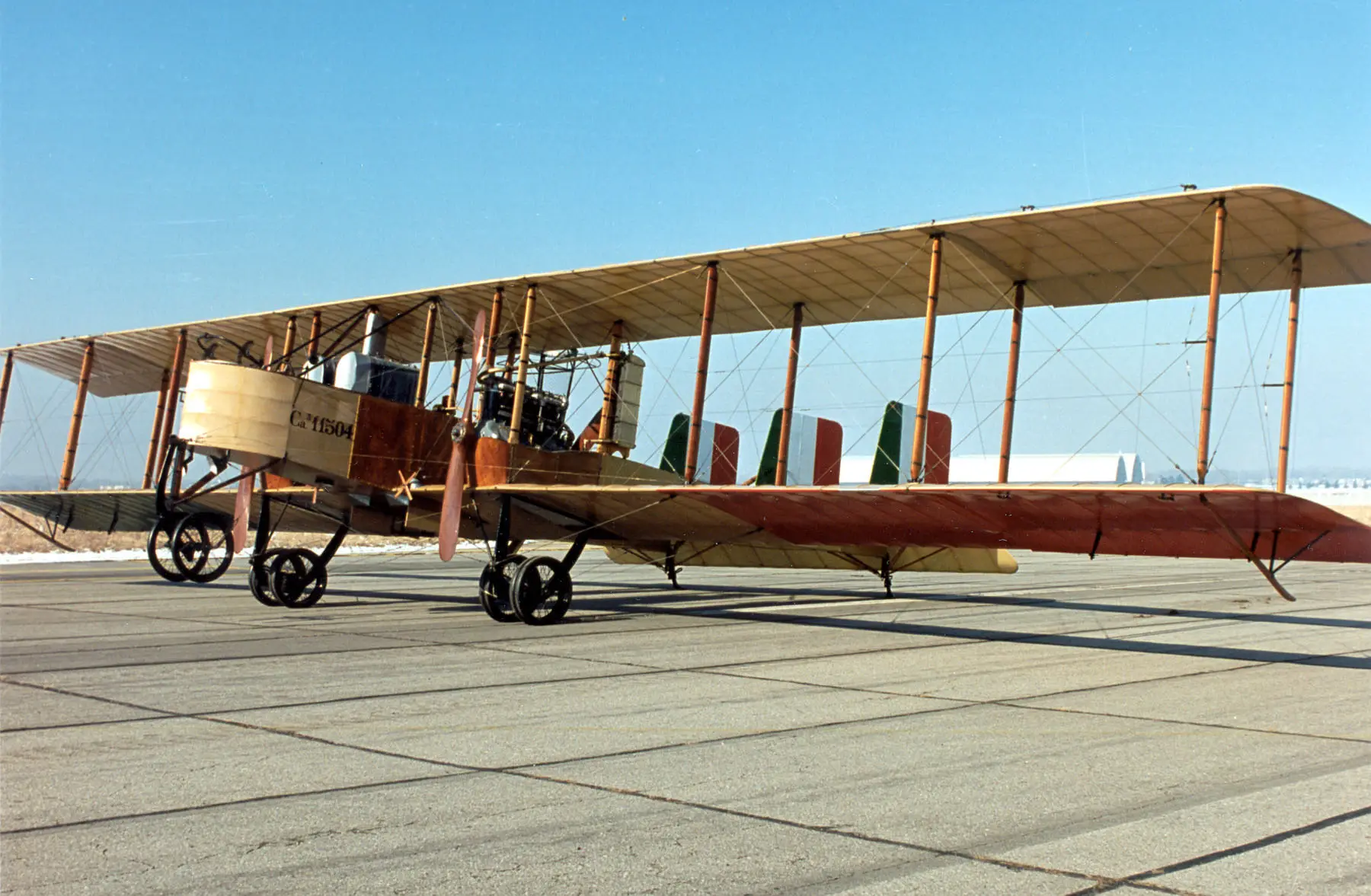
With its wooden frame and fabric covering, this aircraft boasts a crew of four and is armed with two to four Revelli 6.5 mm or 7.7 mm machine guns. That’s right, this beauty is built for action!
Not to mention, the Ca.3 is a significant upgrade from its predecessor, the Ca.2. In fact, the Ca.3 replaces the two engines mounted on the booms with a powerful Isotta-Fraschini engine that was previously only used as the central, pusher engine on that design.
With between 250 and 300 of these impressive planes built, it’s no wonder they’ve been utilized by the Italian Army, France, the American Expeditionary Force, and the Royal Naval Air Service.
Incredible history has been made with the Ca.3, from its initial service in 1915 to its use in Benito Mussolini’s first assaults on North Africa.
This aircraft has proven itself time and time again and continues to be a force to be reckoned with.
Reconnaissance
These aircraft were used to gather information about the enemy by flying over their territory, aerial photography, or observing troop movements. They were often unarmed or lightly armed.
Royal Aircraft Factory B.E.2 (British)
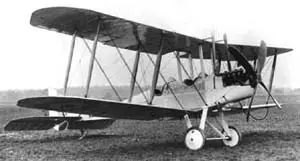
The B.E. 2, a British aircraft utilized for reconnaissance and military observation missions, as well as a single-seat home-defense fighter against German airships over England, had a significant presence in the Royal Flying Corps from 1912 onwards.
In service for several years, it played an important role in military operations during World War I.
Specifically, this particular Royal Aircraft Factory B.E. 2 was constructed in 1915 and served with No. 7 Squadron RFC from 1916 to 1917.
While it was initially identified correctly, it was later misidentified as a B.E.2c fighter in 1919 and was subsequently displayed at the Canadian War Museum until 1957.
Despite the temporary misidentification, the B.E. 2 remains an important part of aviation history and its contributions to the war effort should not be overlooked.
Rumpler C.I (German)
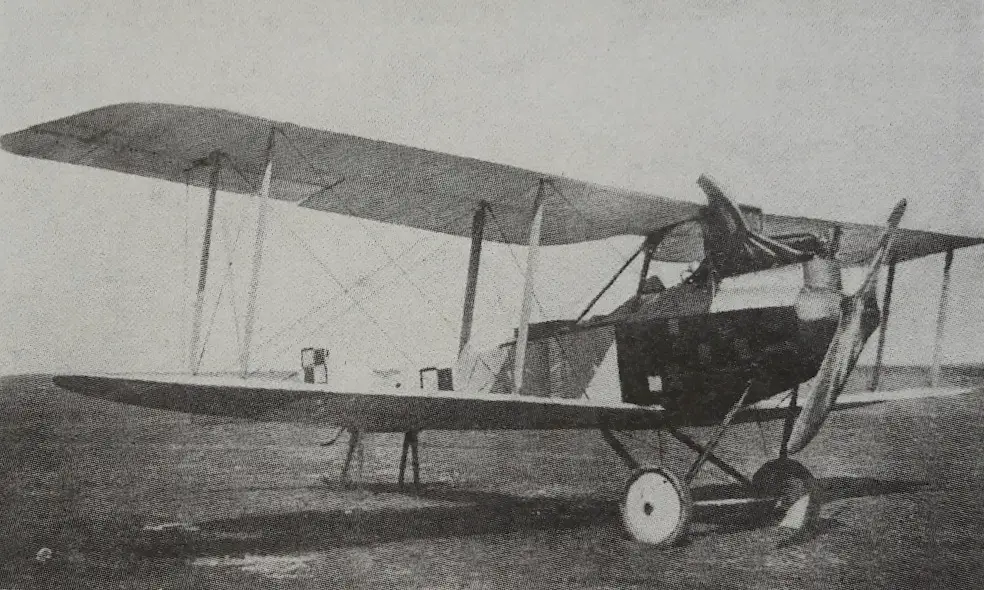
Edmund Rumpler, the founder of the Rumpler Flugzeugwerke company, began producing the “Etrich Taube” reconnaissance aircraft in 1909. However, with the onset of World War I, he shifted his focus to designing military biplane scout aircraft for the German military.
One of his designs was the C.I, a conventional biplane fighter with two open-air tandem-seat cockpits, a single vertical tail fin, and triangle-shaped horizontal planes.
It was powered by a Mercedes D.III liquid-cooled inline piston engine that could deliver up to 160 horsepower.
The initial production model of the C.I. featured a 7.92mm Parabellum MG14 series machine gun at the rear cockpit, but later models had a fixed, forward-firing 7.92mm LMG 08/15 series machine gun with “interrupter” gear to provide the pilot with his own forward armament.
The aircraft had a two-man crew and was critical for the German air service. The production of the C.I. was spread across multiple lines beyond Rumpler facilities, including four other German companies.
Voisin III (French)
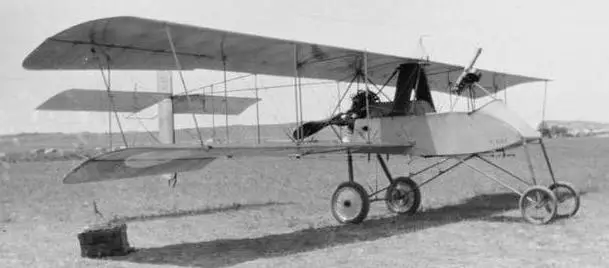
The Voisin III was a versatile aircraft during World War I, used for various missions such as bombing, reconnaissance, artillery spotting, and training.
It was one of the main types chosen by the French Aviation Militaire and was also purchased by the Imperial Russian Air Force.
The aircraft was built in several countries including Italy and the United Kingdom and had a top speed of 105 – 113 km/h (65 – 70 mph) with a carrying capacity of up to 150 kg (330 lb) of bombs.
Powered by a single 97 kW (130 hp) Salmson M9 engine, the Voisin III was the first dedicated bomber aircraft. In September 1914, France organized the first bomber group, GB1, which conducted successful bombing campaigns in early 1915.
This included a retaliatory attack against the Badische Anilin Gesellschaft in Ludwigshafen, Germany. The Voisin III was also responsible for the first successful shooting down of an enemy aircraft, making it a significant aircraft in the history of aviation.
Ground-attack
These planes were designed to attack enemy troops, vehicles, and positions on the ground. They were armed with machine guns or small bombs and would fly low over the battlefield.
Airco DH.4 (British)
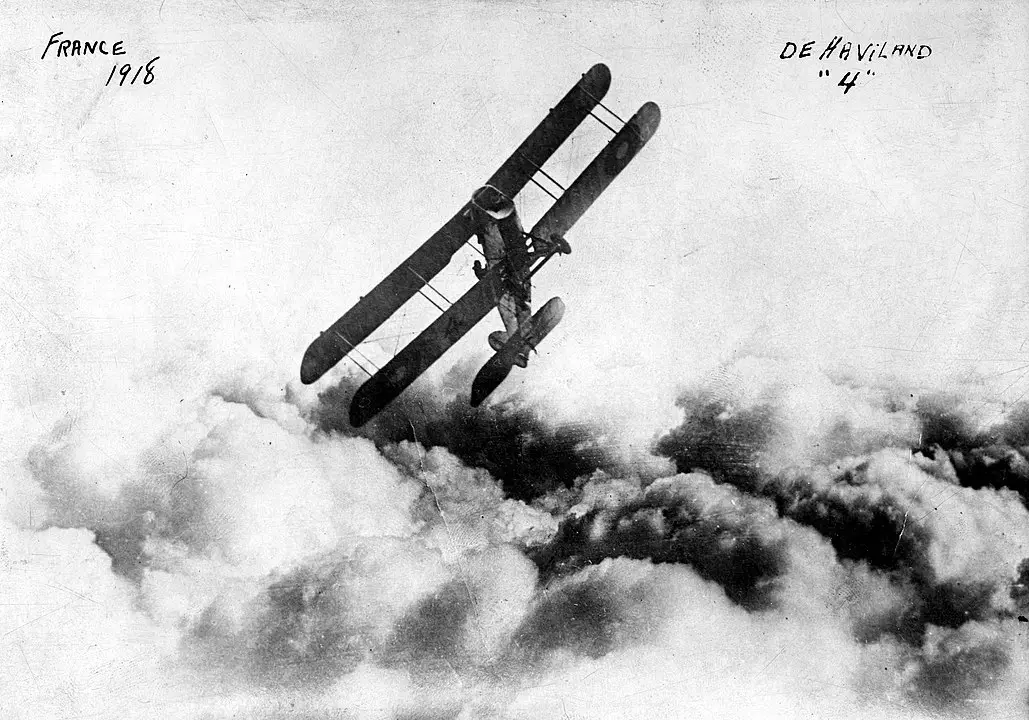
Geoffrey de Havilland designed the DH.4 as a nimble and lightweight two-seater combat aircraft that was equipped with the newly-developed 160 hp (120 kW) Beardmore Halford Pullinger (BHP) engine. After its maiden voyage in August 1916, the DH.4 was lauded for its exceptional handling and performance.
By January 1917, the DH.4 was operational with the RFC, and it was soon adopted by an additional five squadrons by the end of the year.
The aircraft’s popularity was aided by the desire to launch retaliatory bombing missions against Germany. The DH.4 was armed with one Vickers machine gun, and one or two.303 in (7.7 mm) Lewis guns mounted on a Scarff ring for the observer. Its maximum payload capacity was 460 lb (210 kg).
Halberstadt CL.II (German)
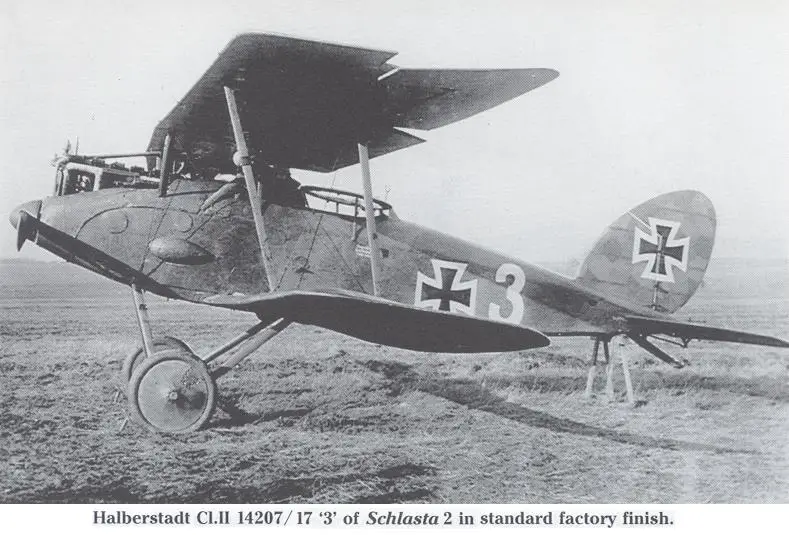
The CL.II was a biplane that packed a serious punch with its single 7.92mm LMG 08/15 synchronized machine gun and ten-stick grenades. Equipped with a powerful Mercedes D.III 6-cylinder inline engine, it boasted a fixed undercarriage and open-air cockpits for its two crewmembers.
This formidable aircraft entered service in August 1917 and quickly proved itself to be a major contributor to German success on the battlefield, particularly in the critical roles of close air support and ground attack. In fact, the CL.II was a key factor in securing Germany’s position during the pivotal Battle of Cambrai.
The CL.II’s versatility was a major advantage on the battlefield, as it could engage both air and ground targets with lethal accuracy. This flexibility also made it an ideal escort for larger, slower, and more vulnerable warplanes as required.
Halberstadt was responsible for producing five batches of this impressive aircraft, while Bayerische FlugzeugWerke contributed to the other 200 aircraft constructed in total.
Salmson 2 (French)
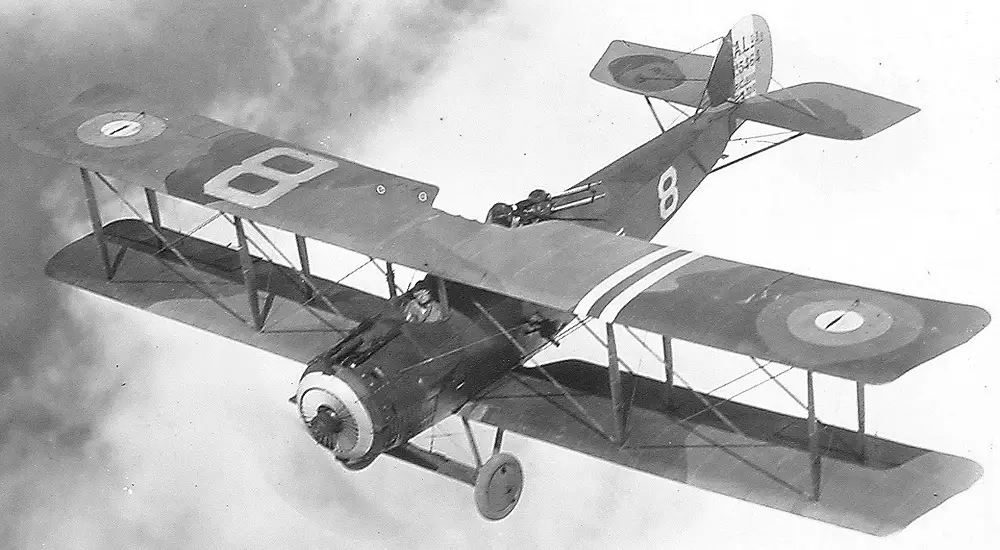
Developed as a replacement for the Sopwith 1 1/2 Strutter and Dorand A.R. series, the Salmson 2 was a biplane designed for reconnaissance missions.
It was equipped with a Salmson 9Za radial piston engine that delivered 230 horsepower, enabling it to cover a range of up to 300 miles.
The Salmson 2 boasted a range of machine guns, including a Vickers machine gun of 0.303 calibers that were synchronized with the interrupter gear controlling the propeller.
The rear gunner had a trainable mount, which held a pair of 0.303 caliber Lewis machine guns. Overall, the Salmson 2 was a capable aircraft with adequate armament and power.
It was eventually given to American forces for their own reconnaissance purposes, with a total of 3,200 units produced.
Seaplanes and Flying Boats
These were aircraft that could take off and land on water. They were used for naval reconnaissance, bombing enemy ships, or protecting friendly ships.
Curtiss H-16 (American)
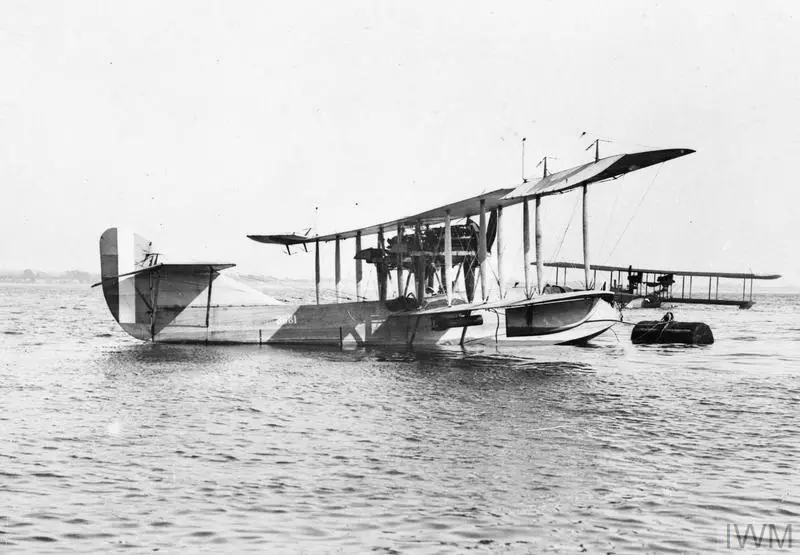
During wartime, the British Royal Navy quickly put the Curtiss Model H seaplane flying boat aircraft into service as a patrol and rescue aircraft. The H-class models eventually replaced the earlier versions due to their larger size, greater adaptability, and increased durability.
The Royal Naval Air Service (RNAS) utilized 71 H-12s and 75 H-16s for long-range patrols over the North Sea, specifically targeting German submarines and Zeppelins. Meanwhile, the United States Navy also operated H-12s and H-16s from their own naval stations. These aircraft were essential for carrying out important missions in the midst of war.
Felixstowe F.2A (British)
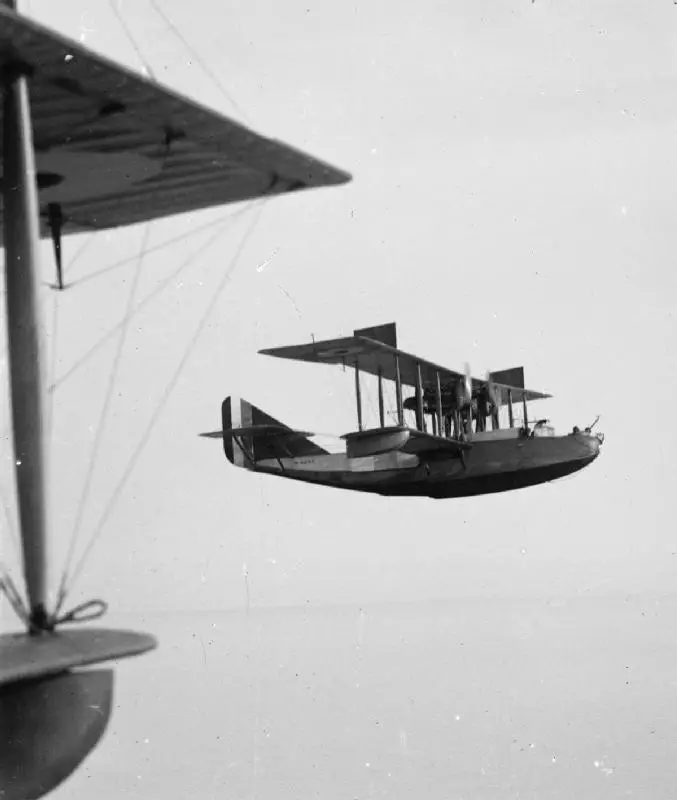
During the First World War, the British developed the Felixstowe F.2, a class of flying boats that proved to be a game changer in seaplane design. Its state-of-the-art hull design became the foundation for most seaplane models that were developed thereafter.
With a maximum flight duration of 10 hours, the Felixstowe F.2 was capable of carrying out long-range anti-submarine and anti-shipping patrols, as well as reconnaissance missions.
Powered by twin 375hp Rolls Royce Eagle VIII engines, the Felixstowe F.2a’s hull had a deep ‘V’ shape, constructed using advanced boat-building techniques. The top coaming and bottom wings featured plywood walkways. Early production models were equipped with glazed cabins, fabric-covered sides of the rear hull, and largely unbalanced ailerons.
However, later models saw improvements such as replacing the cabin with an open cockpit, incorporating balanced ailerons, and reinforcing the rear hull sides using ply or diagonally applied “Consuta” planks. These enhancements ensured that the Felixstowe F.2 remained an unmatched seaplane model for its time.
Hansa-Brandenburg W.12 (German)
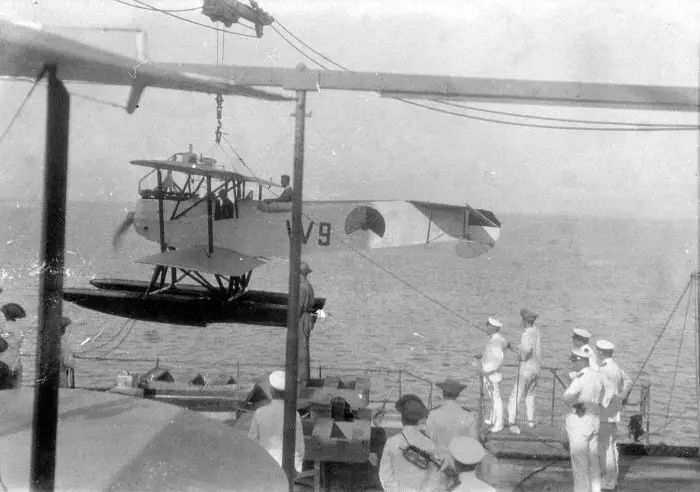
During World War I, Germany produced a biplane fighter floatplane known as the Hansa-Brandenburg W.12. This aircraft featured an unusual inverted tailfin/rudder and was equipped with a Mercedes D.III series 6-cylinder inline piston engine. It had a wingspan of 36 feet, 9 inches, a height of 10 feet, 10 inches, and a running length of 31 feet, 6 inches.
The W.12 was armed with LMG 08/15 series 7.92mm aircraft machine guns as well as a Parabellum MG14 series machine gun that was fitted to the rear observer/machine gunner’s cockpit ring. Despite being a relatively unknown aircraft, the W.12 achieved some success, most notably in shooting down the British airship C.27. This aircraft remains an interesting footnote in the history of aviation and World War I.

